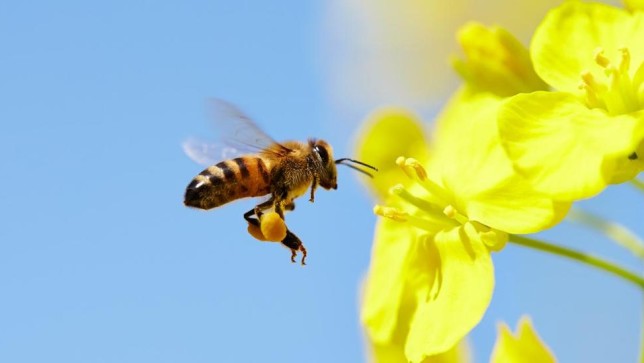Use of controversial neonicotinoid insecticides (“neonics”) in agriculture is not as effective as once thought, and can be replaced by advantageous pest-management alternatives, according to a study published today in the Springer journal Environmental Science and Pollution Research.

This latest publication of the Task Force on Systemic Pesticides reviews 200 studies to assess mass use of systemic insecticides in agriculture, focusing on their effects on crop yields and the development of pest resistance to these compounds after two decades. While neonics were first brought into use in 1991, documented resistance to them dates as far back as 1996. The authors identify a diverse range of alternative pest-management strategies available for large-scale crop production, concluding that a new framework is needed for a truly sustainable agricultural model that relies mainly on natural ecosystem services instead of highly toxic chemicals.
“Over-reliance on systemic insecticides for pest control is inflicting serious damage to the environmental services that underpin agricultural productivity,” said Task Force co-chair and scientist at France’s National Scientific Research Centre Jean-Marc Bonmatin. “This new research is exciting because it’s proven the existence and feasibility of a number of alternative, integrated pest management models—which are far better for the environment without increasing costs or risks for farmers.”
Neonicotinoids and the phenylpyrazole fipronil are the world’s most sold systemic insecticides. They are routinely used in agriculture as seed treatments even where there is no relevant pest threat. After two decades of extensive neonics use, studies show these pesticides can have disastrous effects on biodiversity and ecosystems, including harm to pollinators.
“Insecticides are expected to achieve higher yields and net incomes, but this certainly is not always the case,” Bonmatin said. “The overwhelming evidence of negative effects on pollinators and arthropods needs to be weighed against the pest control benefits these systemic insecticides are supposed to produce.”
Today’s report cites many alternative integrated pest-management approaches that can be implemented in combination: at the landscape level (e.g., ecological corridors), by using better farming methods (e.g., crop rotation, resistant crop varieties), by taking advantage of biocontrol (e.g., predators and parasitoids) and through other means (e.g., traps, naturally derived insecticides).
The study also details results of an innovative insurance system that protects farmers against undue financial risks without causing environmental harm. Through a “mutual fund” insurance model piloted in Italy, a collective of farmers manages a mutual fund stock, creating compensation through an interregional distribution of risks. Compensation is commensurate with the financial resources of the fund, which covers risks that private insurance companies currently do not, including climatic adversities such as flooding and damage by wild animals and pests.
“Crop insurance programs can be tailored to reduce the financial risk to farmers from potential pest infestations without the environmental costs of insecticide use,” Bonmatin said. “And on a cost-recovery basis, insurance premiums are far cheaper than insecticides, so farmers’ net incomes rise, too. It’s a win-win approach for farmers and the environment.”
The European Union is expected to vote soon on a proposal to expand its 2013 moratorium to cover most uses of neonics. France will phase-out all neonics next September. Canada is proposing to phase-out all agricultural uses of the neonic imidacloprid, with a final decision expected in December.
Separately, Canada has also proposed to cancel some uses of other neonics (clothianadin and thiamethoxam), but would continue to permit their main use as seed treatments.
“Regulators need to realize that if we want sustainable agricultural practices, we need a more restrictive regulatory framework and programs to support farmers making the switch,” Bonmatin said. “Our findings on the availability of alternatives will be particularly relevant where new restrictions on neonics are being considered.”














